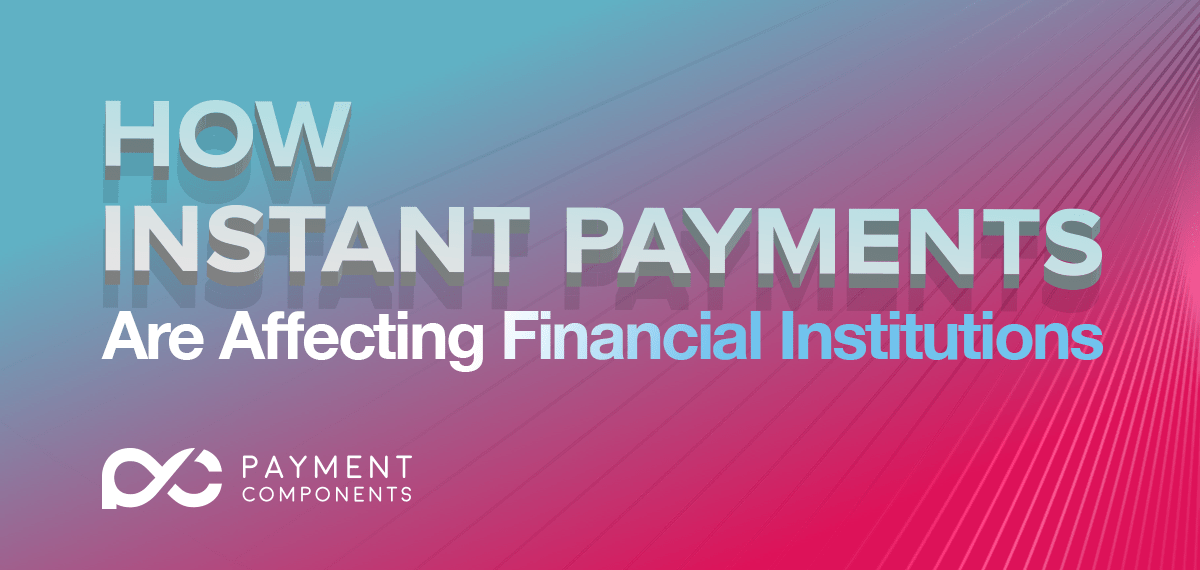How Instant Payments Are Affecting Financial Institutions
The rise of instant payments is revolutionizing the way financial institutions do business. For consumers, instant payments mean faster access to funds and greater convenience. But for financial institutions, instant payments can pose a number of challenges. In this blog post, we'll explore how instant payments are affecting financial institutions and what the future holds for this new payment method.
How Instant Payments Are Affecting Financial Institutions.
The benefits of instant payments are numerous and diverse, but they can be summed up as follows:
1. They make it easier for customers to receive and use their money.
2. They help businesses save on costs associated with processing traditional payments (e.g., check processing fees).
3. They can speed up transactions and reduce the risk of fraud.
4. They provide a more efficient way to settle debts and make other types of payments.
5. They offer more flexibility than traditional payment methods, allowing for different types of transactions (e.g., person-to-person payments) to be processed quickly and easily.
The Cons of Instant Payments.
While instant payments provide many benefits, financial institutions should be mindful of certain possible downsides as well:
1. There is currently no infrastructure in place to support widespread adoption of instant payments – this will take time and investment to build out.
2. The technology behind instant payments is still new and untested, which could lead to problems down the line if not properly managed.
3. There is a risk that fraudsters could exploit the system to commit scams or other crimes – this will require careful monitoring and security measures to mitigate against such risks. Financial institutions need to bolster many of their current processes with AI-powered tools.
4 .The costs associated with setting up and running an instant payment system may be prohibitive for some financial institutions, at least in the short term.
The Future of Instant Payments.
In order for instant payments to become the new standard, financial institutions will need to make some changes. One of the biggest changes will be in the way that they process payments. Currently, most payments are processed batch-wise, which means that they are grouped together and processed all at once. Depending on the institution, this may take a few hours or possibly a day or two. With instant payments, however, each payment will need to be processed individually as it comes in. This will require a lot more processing power and could slow down other types of transactions that are being processed at the same time. Payment systems must become more flexible. Thankfully, due to ISO20022 migration, institutions have several choices to battle this.
Another adjustment that banking institutions will need to make is to how they keep payment information. Currently, most payments are stored offline, which means that there is a delay between when a payment is made and when it is recorded. With instant payments, however, all payments will need to be stored online so that they can be processed immediately. This could put a strain on institutions' storage capacity and may require them to upgrade their systems. A payments hub is an ideal solution for this kind of issue.
Finally, financial institutions will need to adjust their fees in order to accommodate for the increased costs of processing instant payments. Currently, most institutions charge flat fees for all types of transactions regardless of how quickly they are processed. However, with instant payments becoming the norm, these fees will likely increase in order to cover the additional costs associated with processing them. This could cause some customers to balk at the higher prices and may lead them to switch to another institution that charges lower fees. There are, of course, exceptions to this logic like the recent proposal from the European Commission that aim to make instant euro payments affordable to all.
The Benefits of Instant Payments.
Despite the challenges that come with transitioning to instant payments, there are also several benefits that financial institutions can enjoy by making this switch. One of the biggest benefits is improved customer satisfaction. Customers today expect faster service and shorter wait times, and instant payments can help financial institutions meet these expectations. In addition, customers who receive their payments instantly are less likely to experience late fees or other penalties associated with delayed payments.
Another benefit of switching to instant payments is increased efficiency within financial institutions themselves. By processing each payment individually as it comes in, rather than grouping them together and processing them all at once, institutions can avoid many of the delays and disruptions that often occur during batch processing (such as system outages or errors). In addition, storing all payment information online can help reduce search times and make it easier for employees to find specific data when they need it (such as when resolving customer inquiries).
Finally, making the switch to instant payments can help financial institutions save money in the long run by reducing their reliance on paper checks and other manual processes (such as wires). In addition, by increasing efficiency and reducing late fees/penalties associated with delayed payments),institutions can free up staff time spent dealing with these issues so they can focus on more revenue-generating activities.
Conclusion
Instant payments are having a profound effect on financial institutions. They offer a number of advantages, such as increased speed and efficiency, but they also come with some drawbacks. Despite the challenges, instant payments are here to stay and will likely only become more commonplace in the years to come. Financial institutions would be wise to start planning for the transition now in order to ensure a smooth transition and take advantage of the many benefits that instant payments can offer.

